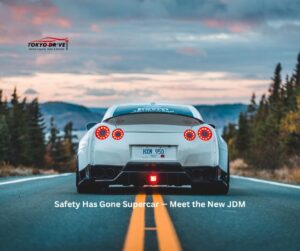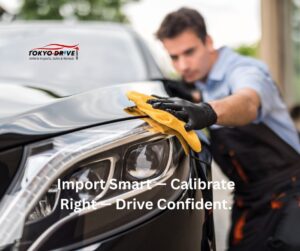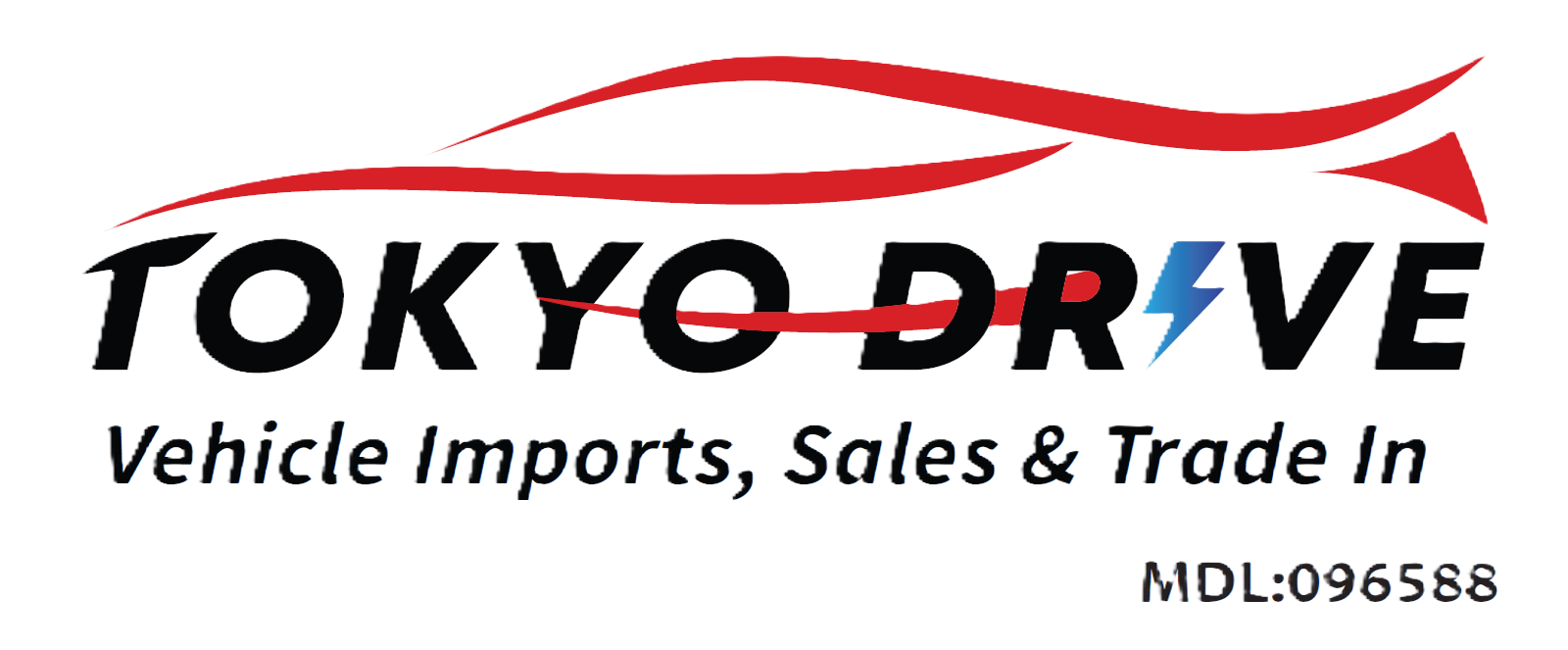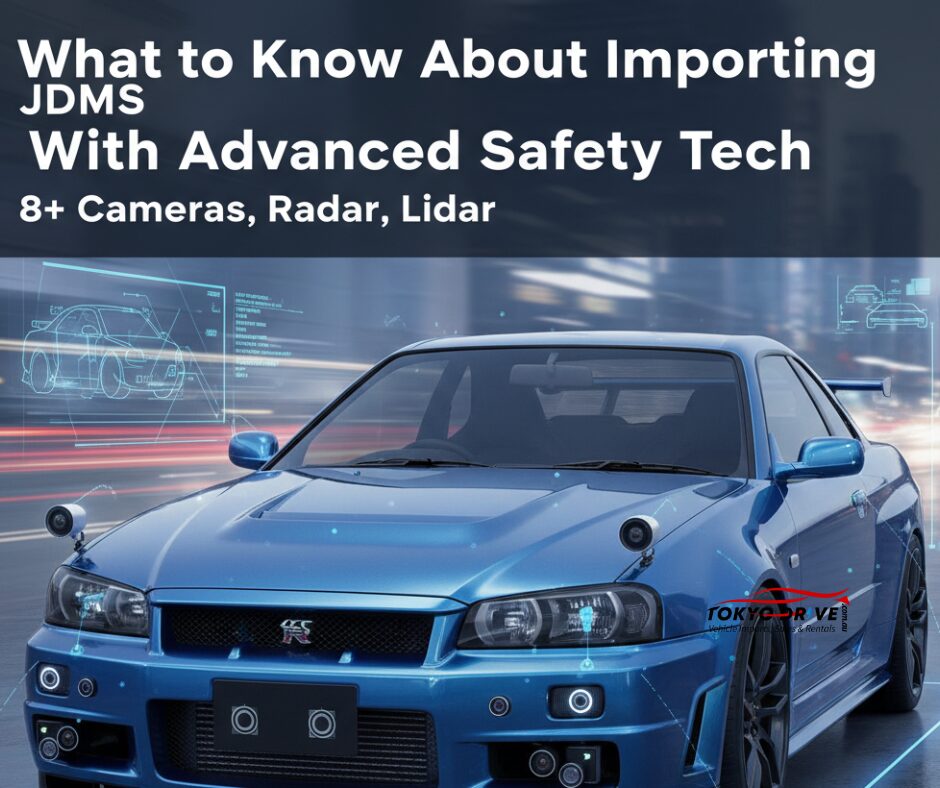Answer First:
If you’re importing a JDM car equipped with advanced safety features such as 8+ cameras, radar sensors, and lidar systems, the most important things to know are:
-
Compliance with Australian safety and import standards (ADR/VIA).
-
Proper recalibration of camera and radar systems post-shipment.
-
Availability of compatible parts, diagnostics, and maintenance support.
-
Potential registration and insurance implications due to high-tech components.
In short: Modern JDM cars are smarter—but also more complex to import and maintain.
The Rise of Advanced Safety in JDM Imports
Japanese automakers like Toyota, Honda, Nissan, and Subaru have long been global pioneers in automotive safety innovation. From Adaptive Cruise Control (ACC) to 360° Surround Cameras, Japanese Domestic Market (JDM) vehicles are now loaded with AI-powered driver-assistance systems.
Recent JDM imports feature:
-
8 to 12 high-resolution cameras for lane-keeping and parking assist.
-
Millimeter-wave radar for collision prevention and adaptive braking.
-
Lidar (Light Detection and Ranging) sensors for object and pedestrian detection.
-
Advanced Driver Assistance Systems (ADAS) integrating all these technologies.
For Australian JDM enthusiasts, this means access to cutting-edge technology often years before it appears in local market models. But it also brings new import, compliance, and maintenance challenges.

1. Understanding Import Rules for Advanced JDM Safety Tech
Vehicle Import Approval (VIA) and ADR Compliance
Before bringing your car into Australia, you must ensure it complies with Australian Design Rules (ADR). Vehicles with radar, lidar, or AI-based safety systems must pass technical checks to confirm that these sensors do not interfere with local radio frequencies or conflict with local road regulations.
Example:
-
Some radar sensors operate on bands regulated for military or communication purposes in Australia.
-
Certain camera systems require recalibration due to different lane markings or signage compared to Japanese roads.
Always confirm with a Registered Automotive Workshop (RAW) that the vehicle’s ADAS suite can be safely and legally activated after import.
2. System Calibration After Import
Even a perfect shipment can disrupt sensor alignment. JDM cars equipped with 8+ cameras or radar modules must undergo ADAS recalibration before being registered for road use.
Why calibration matters:
-
A 2° misalignment in radar angle can cause false collision alerts.
-
Lidar sensors might misread lane boundaries on Australian roads.
-
Surround cameras may show distorted 360° views due to different road widths or curb designs.
Recommended steps:
-
Hire an ADAS-certified technician with JDM diagnostic tools.
-
Use OEM calibration targets (Toyota, Honda, Nissan, etc.).
-
Update software to match Australian driving conditions.
Skipping calibration is one of the top reasons JDM tech systems malfunction post-import.
3. Import Costs and Technical Adjustments
Additional Costs to Expect:
While standard JDM imports cost around AUD $8,000–$15,000 (depending on model), vehicles with advanced safety systems can incur:
-
$500–$1,000 for ADAS recalibration
-
$300–$800 for diagnostic scanning
-
$200–$400 for radar/lidar compatibility testing
-
$100–$200 for software localization
That’s in addition to shipping, customs, and registration fees.
If your vehicle includes Level 2+ semi-autonomous features, expect an extended compliance period while systems are verified by your RAW.
4. Insurance and Registration Considerations
Australian insurers are now evaluating ADAS-equipped imports differently. While they lower accident risk, they can also increase repair costs.
Insurance impact:
-
Higher premiums if your car includes lidar or complex radar arrays.
-
Lower premiums for models with verified safety certifications (e.g., Toyota Safety Sense, Subaru EyeSight).
-
Extended claim times if calibration equipment is unavailable locally.
Registration impact:
-
Some states (like NSW and VIC) require a technical inspection report for vehicles with radar or camera-based safety systems.
-
The compliance plate must note the specific ADAS features activated post-import.
5. Maintenance and Parts Availability
Not all JDM-specific safety components have local part numbers in Australia. If a camera module or lidar sensor fails, sourcing replacements can take weeks.
Pro Tip:
Before importing, research whether the car’s international counterpart (e.g., Nissan Leaf, Toyota Crown, or Honda Fit) shares parts compatibility with Australian-delivered models.
If not, ensure you have access to Japanese parts exporters or specialized JDM maintenance shops that handle ADAS-equipped vehicles.
6. Popular JDM Models Featuring Advanced Safety Tech
If you’re considering importing, here are some models that stand out in 2025 for 8+ camera and radar integration:
| Model | Key Safety Features | Notes |
|---|---|---|
| Toyota Crown (Hybrid) | 12-camera panoramic ADAS, radar cruise, pedestrian lidar | Excellent compliance record |
| Subaru Levorg STI | EyeSight X system, 360° vision, adaptive torque control | Needs EyeSight recalibration post-import |
| Honda Odyssey Absolute | LaneWatch cameras, radar braking assist | Easy part sourcing |
| Nissan Skyline 400R | Lidar-assisted braking, adaptive headlights | High-end, but sensitive radar system |
| Mazda 6 Atenza (JDM spec) | Full ADAS suite with dual radar sensors | Requires software update for AU roads |
7. Legal and Ethical Considerations
JDM safety systems are designed for Japanese traffic patterns—for example, right-hand drive roads and localized signage detection. When imported, these systems may misinterpret traffic signals or fail to detect non-Japanese road markings.
To remain compliant:
-
Disable non-functional ADAS modes until recalibrated.
-
Maintain transparent import documentation noting feature availability.
-
Never advertise non-functioning ADAS as active when reselling the car.
8. Future of JDM Imports with AI Safety Systems
As Japanese automakers move toward AI-based driving assistance and connected vehicle systems, future JDM imports may come with:
-
Vehicle-to-Infrastructure (V2I) communication modules.
-
Real-time hazard detection via onboard AI.
-
Cloud-updated safety algorithms.
However, these systems will require digital compliance approval—similar to how smartphones undergo network certification before sale.
Importers and enthusiasts must prepare for data-driven compliance alongside mechanical checks.

Final Thoughts
Importing JDM cars with advanced safety technologies like 8+ cameras, radar, and lidar is absolutely worth it—if done correctly. You’ll enjoy next-level driving safety, precision, and futuristic tech that most Australian cars still lack.
But remember:
-
Verify compatibility and compliance before shipping.
-
Budget for calibration and diagnostics.
-
Partner with certified workshops familiar with ADAS-equipped JDMs.
The result: a safer, smarter, and truly unique JDM experience—engineered for the future of driving.



